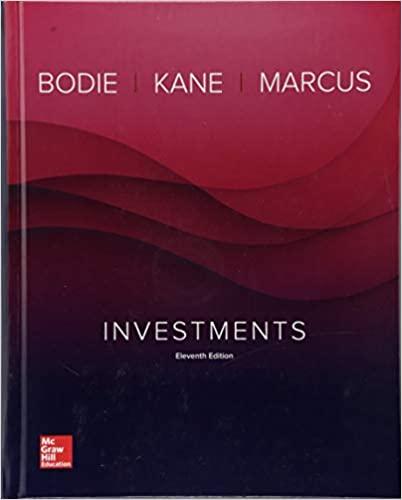Question
Question Consider an entrepreneur with a project which requires an initial investment of $100m and which will have perpetual cash flows of $20m forever or
Question Consider an entrepreneur with a project which requires an initial investment of $100m and which will have perpetual cash flows of $20m forever or $5m forever with equal probability. Assume that all investors are risk neutral and require a 10 per cent expected rate of return. We can show that the entrepreneur is indifferent between raising $100m with debt, equity, or a mix of debt and equity.
- Debt: the entrepreneur must promise investors a coupon such that in expectations they receive interest of 100*.1 = $10m every year. Since in the bad state of the world investors will receive no more than $5m, it must be the case that .5*c + .5*5 = 10 and c = 15. The entrepreneur will receive the remainder: 0 in the bad state of the world and 20 15 = 5 in the good state of the world. In expectation, the present value of this is .5*5/.1 = $25m.
2.Mix: the entrepreneur raises $50m through debt. They must promise investors a coupon such that in expectations they receive interest of 50*.1 = $5m every year. Since even in the bad state of the world the firm can pay $5m, they promise them a coupon of $5m. The total equity payout is the remainder: 0 in the bad state of the world and 20 5 = $15m in the good state of the world; this is equal to .5*15 = $7.5m in expectation. The entrepreneur promises equity investors a fraction of future equity payouts. In expectation outside equity investors will receive 7.5, per year, or 7.5/.1 = 75 in present value. This must equal to the $50m they have contributed, resulting in = 66.7 per cent. The entrepreneur is left with (1 )*75 = $25m.
- my question
hello, I understand the question well but my question. why on debt choice (1) the expected return is 100m*0.10 = 10m . but in the good state we use (20m -15m) . I think we have to use the (20m - 10m) which is the expected return on debt because the debt holder will not share profit with the entrepreneur while in the mix, we use the 5 million which is the expected return on debt .
Step by Step Solution
There are 3 Steps involved in it
Step: 1

Get Instant Access to Expert-Tailored Solutions
See step-by-step solutions with expert insights and AI powered tools for academic success
Step: 2

Step: 3

Ace Your Homework with AI
Get the answers you need in no time with our AI-driven, step-by-step assistance
Get Started


